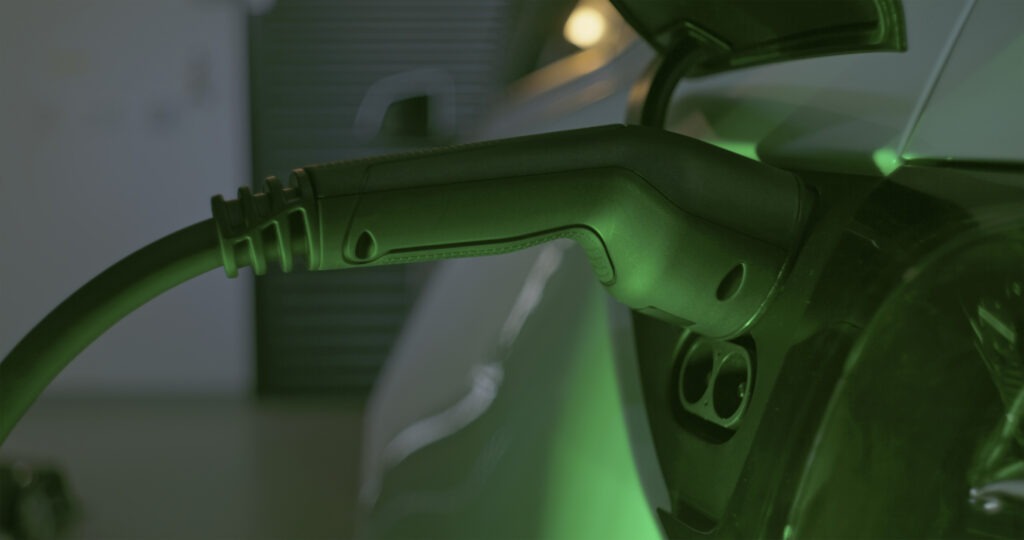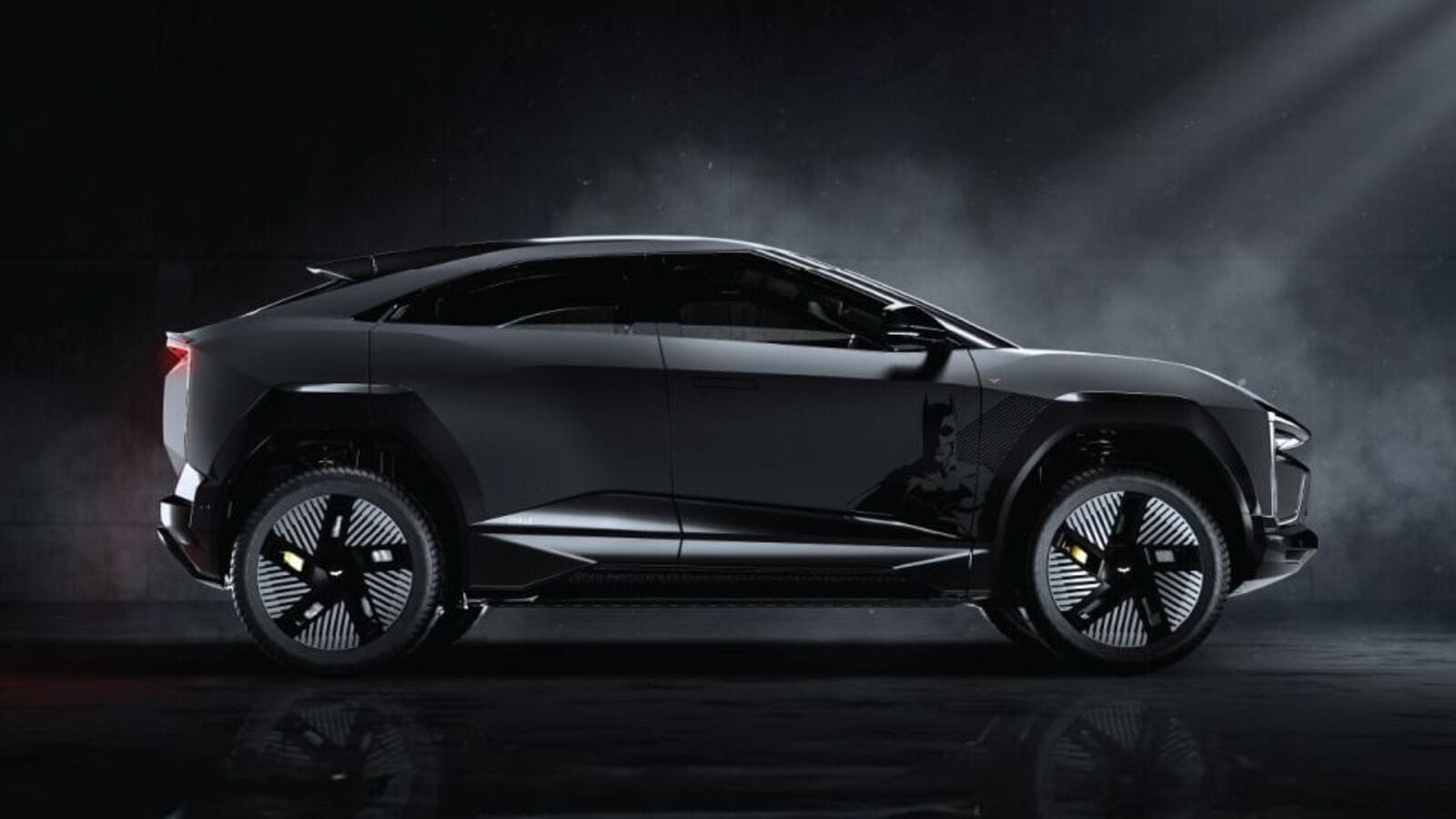19 August 2025

A familiar model headed Europe’s electric vehicle (EV) market after the first six months of 2025. But as battery-electric vehicle (BEV) and plug-in hybrid (PHEV) deliveries continued to surge, which models made the biggest moves? Autovista24 journalist Tom Hooker investigates.
Europe’s BEV market grew by 14.7% in June, marking the technology’s 10th month of consecutive sales growth. However, it was also its smallest year-on-year increase of 2025 so far.
A total of 240,379 all-electric models took to Europe’s roads in June. This equated to a gain of 30,818 units compared to 12 months ago, according to the latest EV Volumes data. Meanwhile, PHEV deliveries soared by 39% to 118,914 units. This was up 33,364 units on June 2024 and gave the powertrain its fourth month of growth in a row.
In the first half of 2025, BEV volumes rose by 24.9% to 1,201,356 units. This result follows an established trend, with consistent double-digit growth in every month so far this year.
PHEVs recorded slightly lower growth of 21.7%, with 594,806 deliveries. Since April, the technology has performed stronger than BEVs, posting its biggest increase of the year in May. However, declines in January and February hampered its year-to-date performance.
Which countries drove volumes?
Germany saw the greatest volume of BEV and PHEV sales in Europe across the first six months of 2025. The country made up 20.6% of all-electric volumes and captured 23.3% of plug-in hybrid deliveries. The UK followed, recording an 18.7% and 18% share of the BEV and PHEV markets, respectively.
France saw the third-most BEV deliveries in the first half of 2025, with a 12.7% market share. Then came Belgium and Norway, which represented 6.4% and 5.9% of BEV volumes, respectively.
The Netherlands, Denmark and Sweden followed in sixth, seventh and eighth. So, the two remaining markets from Europe’s big five, Spain and Italy, were only the ninth and 10th-best-selling BEV markets.
However, the two countries fared much better when looking at PHEV volumes. Spain recorded the third-highest number of deliveries, accounting for 9.6% of the European market. Italy was fifth in the rankings, making up 7.5% of sales. The two were split by France in fourth, accounting for 8.1% of PHEV deliveries in Europe.
Tesla back on top
In the first six months of 2025, Tesla retained its lead at the front of Europe’s BEV market. The Model Y crossover and Model 3 sedan took first and second, respectively. They were also Europe’s best-selling EV models overall in the first half of the year.
The two BEVs will look to replicate their full-year results from 2022, 2023, and 2024. While the Model Y is comfortably leading, the Model 3 is being closely challenged by five of Europe’s domestic models.
The Tesla Model Y recorded 69,223 deliveries from January to June, putting it over 29,000 units ahead of its sibling. The crossover has held the top spot since February, claiming a 5.8% market share in the first six months of 2025.
Meanwhile, a total of 40,100 new Tesla Model 3s were delivered to customers, equating to a 3.3% market hold.
The sedan has been on a rollercoaster ride so far this year. It finished outside of the top 10 in January before returning to the year-to-date table in eighth during February. It climbed to second in March, fell to third in April, and dropped to eighth in May. It only managed to return to second in June.
Europe’s BEV challengers
The Volkswagen (VW) ID.4 dropped to third, with 39,881 sales. This was just 219 units behind the Tesla Model 3.
The combined total of the Renault 5 and Alpine A290 moved up two positions to fourth. This meant 38,608 units were delivered in the first six months of the year. After sitting third in May, the VW ID.7 trailed the hatchbacks by 573 units in fifth.
With 37,792 sales, the Skoda Enyaq dropped two positions from the previous month. Yet, the gap between the SUV and the seventh-place VW ID.3 was tight, with just five units separating the two.
This means only 2,313 units separated second and seventh place. So, while first place may not currently be up for grabs, the battle for second appears wide open.
The Kia EV3 emerged a little further back in eighth, down one position from May. The compact crossover recorded 34,593 sales from January to June. In ninth, the Skoda Elroq made its first appearance in the year-to-date top 10. This was thanks to a total of 33,679 deliveries.
Rounding out the table was the Audi Q4 e-tron, which fell one place from May, with 31,547 units. This meant six VW Group models featured in the BEV year-to-date top 10, the OEM’s best result this year.
However, this positivity could be short-lived. Another German SUV sits just 507 units behind, namely the BMW iX1.
Model Y stretches ahead
The Tesla Model Y and Model 3 topped Europe’s BEV market in June’s standalone figures. Both vehicles appeared to experience their end-of-quarter delivery peak. This marked their third monthly top-two finish in 2025.
The former recorded 23,887 sales, its highest monthly volume so far this year. This was the first time in 2025 that the crossover achieved a year-on-year improvement, albeit with a gain of just six units on June 2024. The BEV took a 9.9% market share in June, down by 1.5 percentage points (pp) compared to 12 months ago.
The Model 3 sat nearly 13,000 units behind its sibling, yet this was still enough to take second. Its monthly total of 10,896 deliveries marked a 47.8% decline compared to its performance in June 2024. It accounted for 4.5% of overall volumes, down from 10%.
Finishing third was the Skoda Elroq. After eight months on the market, it recorded a best-ever 9,593 deliveries and a 4% share. Behind was the combined total of the Renault 5 and Alpine A290. The pair posted their highest-ever monthly total of 7,928 units after entering the market in June 2024, equating to a 3.3% share.
VW Group stalling?
Then came the VW ID.3, which saw volumes fall by 29.1% year on year to 7,041 deliveries. However, this was still its biggest monthly figure since June 2024. The hatchback accounted for 2.9% of overall deliveries, down 1.8pp compared to one year ago.
The BMW iX1 secured its highest finish of the year in sixth, thanks to 6,562 units, up 25.9% year on year. This was its largest monthly total since December 2023.
Consequently, its grip on the market tightened from 2.5% to 2.7%. If it maintains this form in the coming months, it is likely to enter the year-to-date top 10, as its closest competitor, the Audi Q4 e-tron, has not featured in the monthly standings since April.
The Skoda Enyaq landed seventh, matching the BMW iX1’s sales total. Despite this being a 15.2% increase year on year, it also marked the BEV’s worst monthly placement so far in 2025. Its market hold was stable at 2.7%.
Its VW Group stablemates, the VW ID.4 and VW ID.7, recorded their lowest finishing positions of the year, too. The former came eighth with 6,421 units, a drop of 8.9% compared to 12 months ago. Unsurprisingly, its share dropped from 3.4% to 2.7%.
However, the VW ID.7 still had a relatively positive month. It saw volumes soar by 317.1% to 5,718 deliveries. Furthermore, it captured 2.4% of the BEV total, up by 1.7pp.
The Audi Q6 e-tron rounded out the top 10. The SUV posted 5,577 sales and a 2.3% share. This is despite being a relatively new model to the market, having started deliveries in February 2024.
Europe’s PHEV fight
For the first time in 2025, the Volvo XC60 was knocked off the top spot in Europe’s year-to-date PHEV table. Instead, the VW Tiguan was the model to beat. With 29,182 sales, it sat ahead of its rival by just 89 units. Both SUVs accounted for 4.9% of the PHEV total.
The current top two started 2025 well, finishing no lower than fourth in the first six months of the year. However, the battle to become Europe’s best-selling PHEV is not just a two-way fight.
This is because the BYD Seal U has slowly been ramping up the pace. In January, it did not appear in the top 10, while in February, it was only eighth in the year-to-date table. However, by March it had moved into fourth, and in May it jumped to third. Now, with 27,098 deliveries, only 2,000 units separate it from the market leader.
Fading winning hopes
Fourth place went to Ford’s Kuga. In March, it was second in the year-to-date table and trailed the top spot by only 1,781 units. However, the SUV’s hopes of a full-year win have faded since then, posting 22,876 sales from January to June.
Another model that started the year well was the BMW X1, claiming third in February’s year-to-date standings. It now sits fifth, with 19,855 deliveries, moving the PHEV ahead of the Toyota C-HR. The latter recorded 18,970 sales in the first six months of 2025.
There was a close battle for seventh, with the Mercedes-Benz GLC coming out on top. It recorded 15,774 deliveries and moved past the Cupra Formentor. The two are separated by just 66 units.
The BMW 5-Series remained in ninth, posting 14,955 sales across the first half of the year. However, it cannot sit comfortably, as the MG eHS entered the year-to-date top 10 for the first time in 2025. The SUV trails the BMW 5-Series by 137 units.
VW Tiguan takes victory
Propelling the VW Tiguan to the top of the year-to-date PHEV table was a record monthly result in June. The SUV posted 6,105 deliveries, marking a monumental increase of 1,316.5% year on year. This gave the PHEV a 5.1% market share, up 4.6pp on June 2024.
The BYD Seal U secured second with 5,885 sales. This meant a year-on-year improvement of 5,108% for the model, which first recorded sales in the market in February 2024. It accounted for 4.9% of the PHEV total, up from a 0.1% share 12 months ago.
In third was the Volvo XC60, posting 4,667 units. This was a growth of 0.7% from one year ago. However, with its two title rivals performing strongly, it will need to up its pace to stay within reach of the top spot. Due to increased market competition, the XC60’s market share fell from 5.4% to 3.9%.
The BMW X1 finished fourth, as volumes grew by 38.4% to 4,235 units, another record monthly result. Further displaying the PHEV market’s competitiveness, its share stayed stable at 3.6%.
Fifth went to the Mercedes-Benz GLC. The SUV recorded a 6.6% growth to 3,766 deliveries, its highest monthly total so far in 2025. Meanwhile, it captured 3.2% of overall volumes, down from 4.1%.
Record results?
In sixth came the Ford Puma, with 3,560 sales, a drop of 17.5% compared to 12 months prior. Consequently, its market share declined by 2pp to 3%.
Seventh went to the MG eHS, making its third appearance in the top 10 this year. The SUV’s total of 3,312 units was up by 76.5% and marked its highest monthly volume since December 2022. Meanwhile, its market share rose from 2.2% to 2.8%.
The Toyota C-HR landed eighth, its lowest finishing position so far in 2025. However, it saw deliveries surge by 109.4% year on year, with 3,210 units. This meant its grip on the market tightened by 0.9pp to 2.7%.
In ninth, the VW Golf recorded growth of 540.8% to 3,018 sales. This was its biggest monthly volume since June 2021, providing the hatchback with its highest-finishing position of 2025 so far. In turn, its share rose from 0.6% to 2.5%.
The BMW 5-Series came 10th with 2,829 units. This equated to a 276.2% increase on June 2024 and marked its best month of deliveries since December 2022. The PHEV saw a 1.5pp uptick in its market share to 2.4%.



